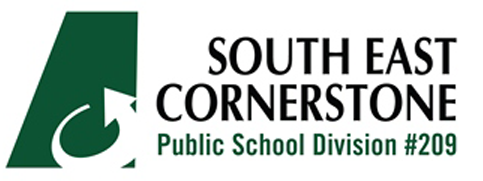During their annual meeting of electors, the Southeast Cornerstone Public School Division released their 2015-16 annual report on Thursday.
The annual report is a snapshot of the goals and activities for Cornerstone, and outlines how the division is deploying the Education Sector Strategic Plan in relation to its school division plan.
The Education Sector Strategic Plan marked its second year during the 2015-16 school year. The goals in the strategic plan guide school divisions to align their work and priorities by 2020.
The top three goals in the strategic plan are: improving First Nations and Métis student engagement and graduation rates; reading, writing and math at grade level across the school division; and achieving an 85 per cent three-year graduation rate.
The goal for First Nations and Métis student engagement is to have a significant improvement in student engagement and graduation rates. Cornerstone celebrates the fact that their First Nations and Métis students are achieving above the province average. They will continue to utilize their Response to Interventions supports in students and look for other ways to support their First Nations and Métis students.
For the goal of reading, writing and math levels, Grade 3 reading data for Cornerstone shows that they have improved from 2014, however they have not improved from 2015.
Overall in the division, 72.7 per cent of Grade 3 students are reading at or above the Reading Level Benchmark. Overall, the reading results are in line with the provincial results.
For the goal of graduation rates, the on-time graduation rates for Cornerstone students have remained fairly consistent. Cornerstone is above provincial graduation rates and they continue to focus on and put supports in place for their students.
There are a number of other goals that remain important to Cornerstone and the Ministry of Education. There is a sector-wide approach to find efficiencies in operational spending, so that the school division can operate efficiently and still be responsive to the challenges of student needs.
A working group of superintendents and principals were formed to review the staffing formula in the school division to see if there was a better way to allocate staff to schools, while still meeting the needs of the students.
Early Years education is also an important focus for Cornerstone. The goal is to support the development of children from birth to age six, so that by 2020, 90 per cent of students are exiting Kindergarten ready for learning in the primary grades.
Children enrolled in the Early Learning and Care program in Cornerstone receive one-to-one consultant support in order to actualize the goals established by parents and consultants to bridge the gaps in their development. Cornerstone has ranked ahead of the provincial results for Early Years Evaluation Teacher Assessments, which is a readiness screening tool that provides information about each child’s development and learning with a focus on reading readiness skills. The school division strives for higher scores, as they recognize that they only have access to a small percentage of children prior to their entry to Kindergarten.
In the financial overview of the 2015-2016 fiscal year, the school division reported a deficit of $830,207. Total expenses for the fiscal year was reported at $107,312,269.
Cornerstone’s largest expense was instruction at $71,285,877, which includes salaries and benefits for teachers and other staff who work with students, resource materials and classroom supplies. The second largest expense was plant operations, which was reported at $15,517,802.
Total revenue for the fiscal year was reported at $106,482,062. The school division receives the large majority of its revenue from a combination of government grants, reported at $43,360,862, and the collection of education property taxes, reported at $56,817,924.
Some budget restraint success for the school division included: there were a higher number of non-resident students than projected, resulting in higher than budgeted tuition fee revenue. There were also several schools fundraising and receiving donations for playground and technology equipment. Board member expenses were lower than budgeted due to lower travel costs and lower expenses in other governance expense areas.
The full annual report will be released on the Cornerstone website, for future viewing. Residents can contact the school division for a paper copy.




